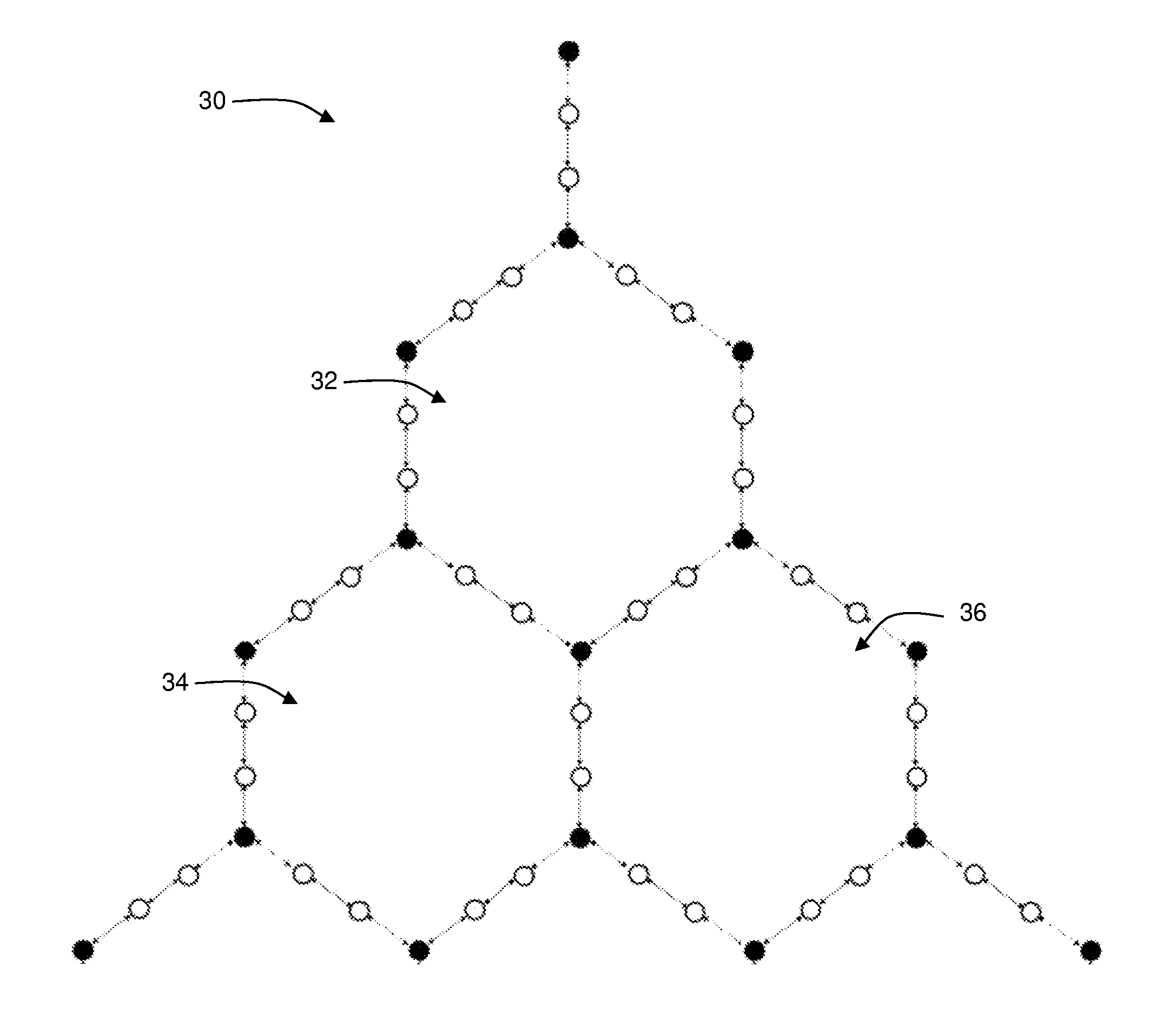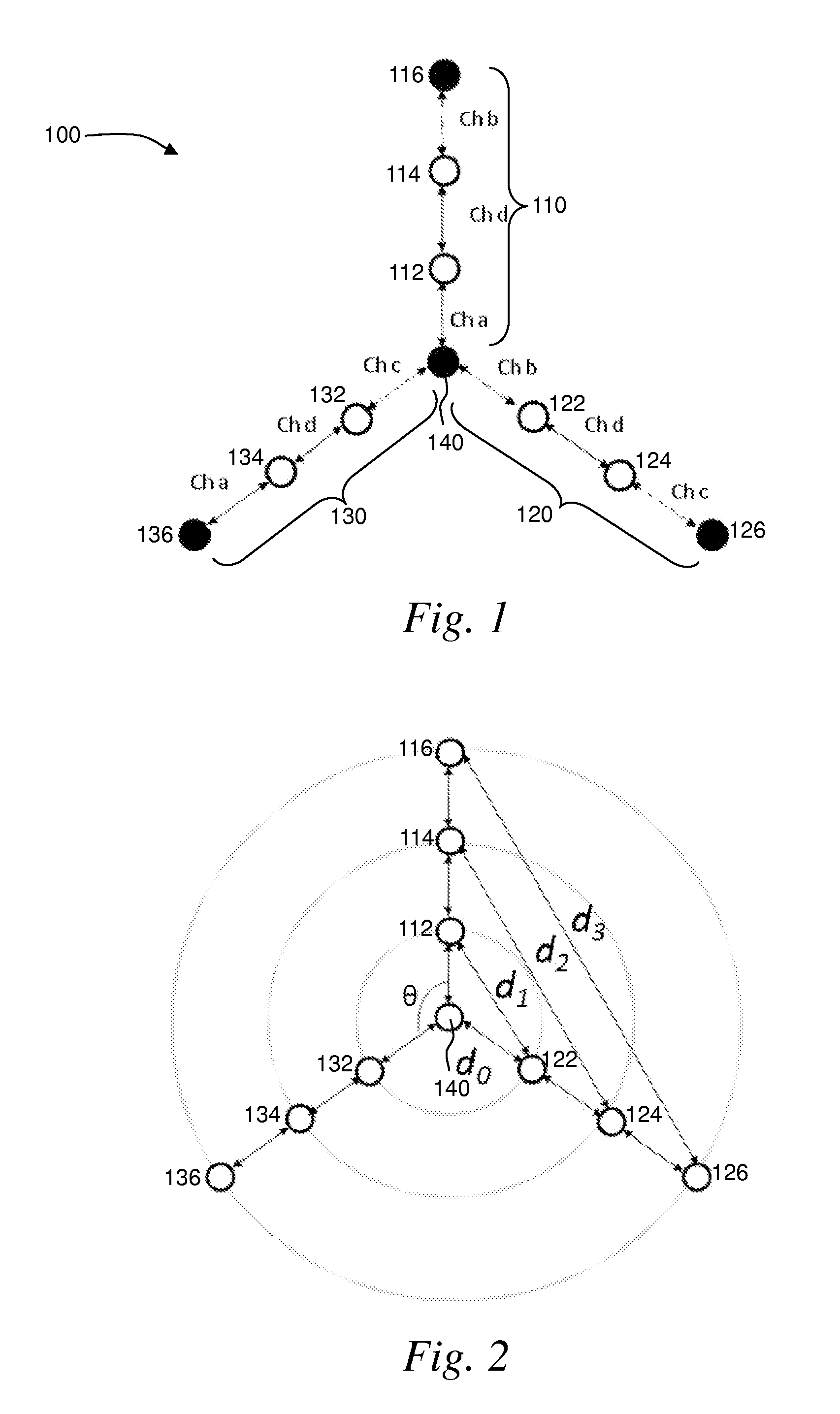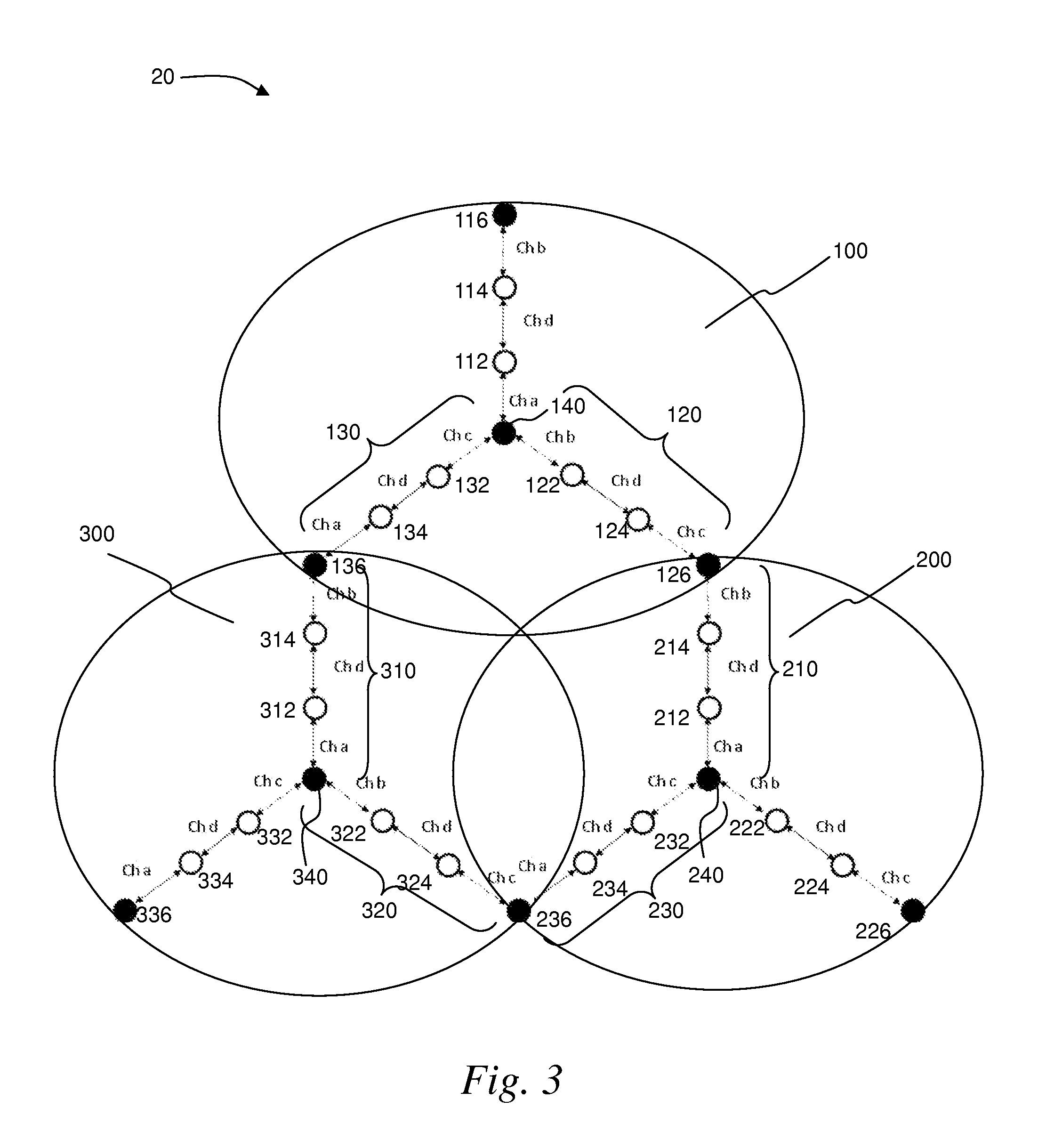Wireless mesh networks with improved radio segregation
a technology of wireless mesh network and radio segregation, applied in the field of wireless communication network, can solve the problems of radio interference (or collision), wmn is vulnerable to throughput degradation, throughput degradation, etc., and achieve the effect of high data rate and extensive wireless coverag
- Summary
- Abstract
- Description
- Claims
- Application Information
AI Technical Summary
Benefits of technology
Problems solved by technology
Method used
Image
Examples
Embodiment Construction
[0021]A wireless network 100 depicted in FIG. 1 as an example of a wireless mesh network comprises a plurality of wireless routing devices in wireless protocol interconnection. A wireless backbone network is typically used to provide access points so that wireless user devices can be connected to the Internet or enterprise computing resources via a wired backbone and through the access points. A router is an example of routing devices while other devices such as data forwarding devices including data switches or data hubs are regarded as equivalent for the present description.
[0022]The exemplary 10-node WMN of FIG. 1 comprises 10 wireless routers nodes each comprising a multiple radio router. The 10 router nodes, designated by node numbers 112, 114, 116, 122, 124, 126, 132, 134, 136, 140, are distributed into three router branches, namely router branches 110, 120, 130 and are connected in data communication to a common wireless router designated by node 140.
[0023]Each of the wireles...
PUM
 Login to View More
Login to View More Abstract
Description
Claims
Application Information
 Login to View More
Login to View More - R&D
- Intellectual Property
- Life Sciences
- Materials
- Tech Scout
- Unparalleled Data Quality
- Higher Quality Content
- 60% Fewer Hallucinations
Browse by: Latest US Patents, China's latest patents, Technical Efficacy Thesaurus, Application Domain, Technology Topic, Popular Technical Reports.
© 2025 PatSnap. All rights reserved.Legal|Privacy policy|Modern Slavery Act Transparency Statement|Sitemap|About US| Contact US: help@patsnap.com



